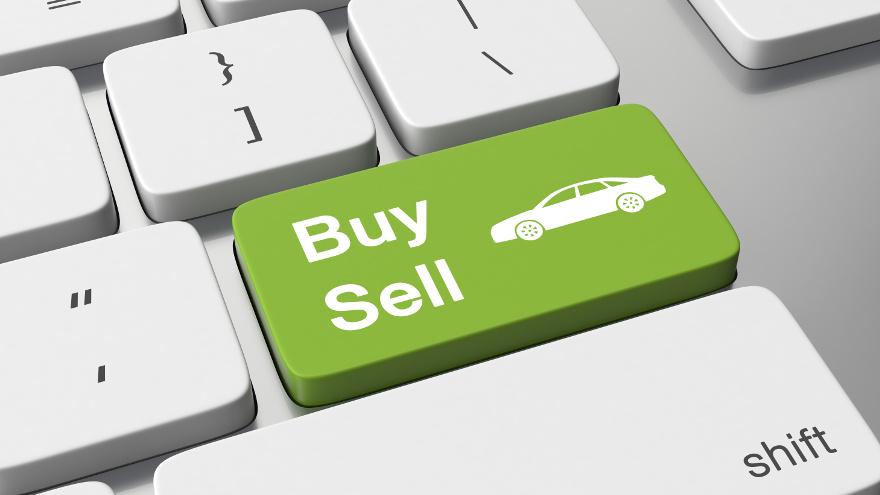Auto auctions see rise in digital transactions

By subscribing, you agree to receive communications from Auto Remarketing and our partners in accordance with our Privacy Policy. We may share your information with select partners and sponsors who may contact you about their products and services. You may unsubscribe at any time.
CARY, N.C. –
One discussion topic that often comes up at used-car industry conferences is this: the increased digitalization of the wholesale vehicle market, be it through third-party platforms or the online offerings of auction players.
Well, a few statistics released Tuesday show some concrete proof of how far that digitalization has come.
Saying the company saw “unprecedented growth of its offsite channels,” Manheim said 40 percent of cars sold through the auction company last year were bought on digital screens.
In fact, Manheim reported 2 million purchases via digital transactions in 2017. Of that total, 630,000 were done through “pure digital platforms” — i.e. on the Manheim.com, OVE and RMS platforms. The latter figure is an increase of 15 percent.
The 2 million figure includes Simulcast sales. And interestingly enough, Simulcast users represented more than half of Manheim’s physical auction attendance last year, the company said.
Going beyond the brick-and-mortar, there was a 30-percent hike in offsite transactions (what Manheim describes as purchases outside physical auction).
Subscribe to Auto Remarketing to stay informed and stay ahead.
By subscribing, you agree to receive communications from Auto Remarketing and our partners in accordance with our Privacy Policy. We may share your information with select partners and sponsors who may contact you about their products and services. You may unsubscribe at any time.
“Our goal is to enable clients to conduct transactions in the office, on the lot or on the go — helping them operate their business in the way that best suits their needs,” said Derek Hansen, vice president of Offsite Solutions at Manheim, in a news release.
“Using Manheim’s digital and mobile channels, we deliver efficiency, cost savings and convenience for dealers buying and selling used vehicles,” he said.
Manheim has three upgrades in its offsite business expected to launch shortly: new search capabilities on OVE; mobile app upgrades; and seller tool enhancements that are designed to “link Marketplace channels, putting comprehensive options at sellers’ fingertips, including the ability to easily list inventory on multiple digital channels to obtain greater vehicle value before consigning it to a physical auction,” the company said.
“Also in 2018, capitalizing on the flexibility provided by a digital channel, Manheim will launch customizable storefronts that address unique seller, buyer or inventory needs,” said Zach Hallowell, vice president, Manheim Digital Marketplace and RMS Automotive, in the news release. “We will enhance clients’ Manheim Marketplace experience and efficiencies to make it much easier to locate and manage inventory across all our channels.”
‘Reaches across the entire nation’
The response to digital demand has been similar among Manheim’s peers.
Shortly after the company released its third-quarter earnings in the fall, KAR Auction Services chief executive officer Jim Hallett pointed out how active the ADESA auction company’s OPENLANE online platform had been in the wake of Hurricane Harvey.
“Because that platform reaches across the entire nation,” Hallett said in a phone interview, “and you don’t have to wait until sale day to buy a car. You can buy a car 24/7, any day of the week. So, those sites were very, very active. They sold a lot of vehicles online. Our online sales were up 34 percent in the quarter, and our physical sales were down 1 percent.”
The 34-percent spike in online volume was “not totally, but heavily impacted” by the storms, Hallett said.
It also was the highest growth rate they had experienced since the first half of 2014, which was early stages of the cyclical recovery, KAR chief financial officer Eric Loughmiller said during the same call.
And not only does this illustrate just how much online buying there was, it also speaks to KAR’s strategy of offering “all the venues” wherever dealers want to buy the vehicles, Loughmiller said.
So what else drove such a massive spike? Loughmiller points out, “that’s where the supply starts (at) what we call the top of the funnel … I don’t know that it was demand-driven.
“If you read what the dealers are saying, they’re actually selling the cars now,” Loughmiller said. “Those dealers in Texas knew they had to start accumulating inventory for when the buyer came to their lot.”
Since the inventory was showing up online first, dealers thought it prudent to buy there because there was a “good chance” it would have been sold before the dealer could have bought it in his or her market.
Loughmiller later added, “And we experienced this when there was a shortage of vehicles; you get the inventory when you can.”
Likewise, for Auction Edge — a technology and software provider for the independent auction market — its auction customers were turning to its Edge Pipeline platform to expand the viewing area of the inventory listings.
So, auctions in Indiana were attracting Texas dealers, in need of an inventory boost following the storms, via simulcast, Auction Edge CEO Dan Diedrich said in an interview late last year.
In short, auctions were generating activity from areas they might not have otherwise had exposure, Diedrich said.
“If you just take a market event like that, where you have hundreds of thousands of vehicles being taken out of the market, when there’s a void there, auctions that aren’t necessarily local can expose their inventory and be there to service the needs of buyers in a scenario like that,” he said.
Hence, the beauty — and sometimes necessity — of the online capability for auctions, independent and corporately owned.


